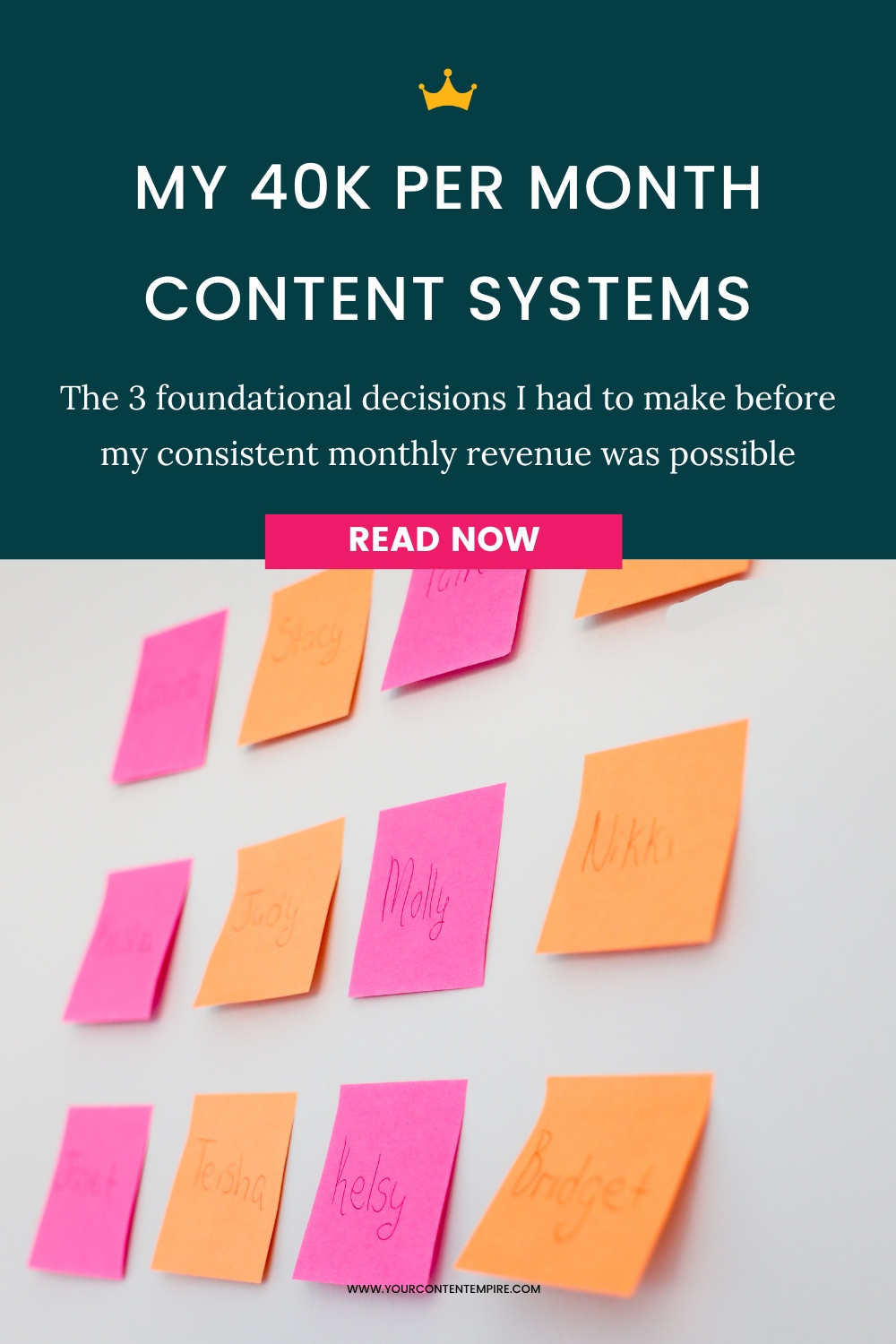What is the best process for learning from e-courses as a business owner? This post covers the process for selecting the right courses and maximizing the benefits you get from them.
People are creating some incredible courses, and they’re flying off the virtual shelves. Statistica reported that the eLearning industry is projected to grow to over $240 billion by 2022 globally. That’s a lot of opportunities for learning.
It truly is amazing that you can find a course to learn about anything and everything you’re interested in. This is especially helpful for learning the skills we need to take our businesses to the next level.
But if you’re anything like me, you have a collection of courses (free and paid) accumulating digital dust in your folders without being touched – much less implemented. Of course, those courses aren’t doing any of us any good if they’re not being used.
Another real risk of course addiction (and if you’re not sure, it’s real! Just ask in any business-related Facebook group) is that it can feed into that feeling that you need to be ready to take action.
You may be thinking “I just need to learn x” or “I just need to get y set up”. It’s a great stalling tactic because if you buy into this mindset, you can put off taking action forever – there will always be something else to learn!
Prefer to watch instead?
So this post was written to help you, the busy business owner…
- Cut through the clutter and choose the courses you really need to go through
- Start implementing and using the courses you’ve collected
You can download the Course and Learning Planner and read through the steps below to create your own learning and implementation system for your business:
Step 1 – Gap Analysis
The first step that’s going to guide you through getting the most out of e-courses is to perform a gap analysis of where you’d like your business to be and where it currently is. This means looking at the distance between your business vision and your current business reality.
Only then is it possible to identify the steps that will take you from point a (your biz right now) to point b (your business vision).
- What does your ideal business look like? Be specific by thinking about: the products and services you offer, the partnerships and collaborations you’re in, the team surrounding you, what your marketing strategies look like, what types of communications you undertake (blogging, newsletters, social media, podcasts). Basically consider everything that is a part of your vision for your ideal business.
- What does your current business reality look like? Think in terms of the key differences between your ideal business vision above and the things that you are currently doing in business.
- Brainstorm what you’d have to learn or implement to bring your business from where it is now to where you’d like it to be. What are the gaps?
Step 2 – Prioritize
In step two, it’s time to list all of the courses that you currently have and those that you’d like to purchase. A great way to go about this is to go back through the list and put a star by any courses that support your business vision. These courses are your priority.
This isn’t to say that you won’t go back and take the other courses, it just means that in order to serve your business vision, the starred courses should come first.
Relist the starred courses below in the right-hand column. Go back through the list and in the left-hand column rank your courses in order of their impact on your business vision. 1 = the most impact & highest rating. The higher-rated courses are the ones to focus on first.
If you’ve put a course down that you cannot take at the moment for whatever reason, move on to the next course on the list until you can take the higher-rated course.
What are your next 3 courses or programs that you’re going to focus on going through and implementing?
Step 3 – Time Block
Step three is all about setting aside time to make these courses happen. Go to your calendar (paper, Google, or whatever you use) and block out the time you’ve committed to courses and e-learning over the next 4 weeks.
Remember to schedule separate time blocks for implementation time. The implementation blocks will be the time that you use for taking action based on what you learned. This often forgotten step will totally transform what you'll be able to get out of these courses, because putting them into practice through implementation will help you retain the information.
The ratio that I use in my business is 3:1. So for every three hours of learning, I dedicate one hour towards implementation. This is just a suggestion, so feel free to stick to a ratio that works for you and your business.
As I’ve learned with exercise and self-care, if you don’t schedule it and assign it to a real date and time, it’ll almost never actually happen.
Step 4 – Create Your Learning (AND Implementation) Plan
Now that you’ve prioritized and scheduled your course or courses, it’s time to take an inventory of the lessons and activities contained in the course or module. You can use this information to provide a realistic estimate of time that it will take you to complete the lesson or activity.
Are there any activities or lessons that you don’t need or want to take? If so, cross these off. Remember, you aren’t obligated to complete every part of a course. Take what you need and leave the rest.
Creating Lesson Plans
It’s time to create your lesson plans for your learning blocks. You can do this by completing one box for each of the learning time blocks you have in the calendar you created.
You may be surprised at just how much having a well-defined plan for each of these time blocks will help to keep you on track. I recommend you leave 10-15 minutes at the end of each learning block for the “Lesson Review Worksheet” on the next page.
Step 5 – Lesson Reviews
A little review goes a long way. Spend 5 minutes at the end of each learning time block to jot down your implementation and review notes. You’ll find this included in the template.
Step 6 – The Holding Wing
When you want to sign up for a new course, put it in the ‘Holding Wing’. Try to wait at least 24 hours before deciding to purchase the course.
The aim is to avoid the bright, shiny object syndrome and to remove some of the urgency or excitement from the decision to purchase.
After 24 hours, use the following questions to evaluate your decision of whether to purchase the course or not:
- What will I learn from this course?
- How will what I learn from this course support my business vision that I’m trying to achieve?
- Is now the time for me to take this course/program? Do I have the time to dedicate to this course?
- Can I afford this course/program?
- What do I have to gain from this course? What do I have to lose if I don’t take this course? What will I lose from taking this course?
- Will I purchase this course?
Start Getting More Out of E-Courses
These steps can help you reduce your tendency to overbuy courses, and it can also help you overcome anxiety towards buying the ones you need. By following these steps you can ensure you’re taking only those courses that are sure to push your business forward.
Plus, you will also have maximized what you can learn from them by setting aside dedicated time for learning, implementation, and review. Follow this guide and you’ll be officially taking your e-course learning to the next level.






